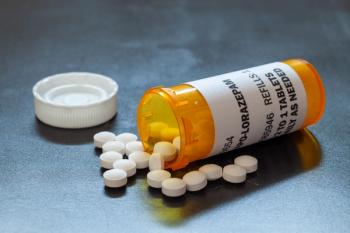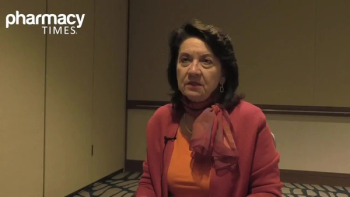
- October 2021
- Volume 87
- Issue 10
Moms Are Not OK: Understand, Recognize, and Treat Postpartum Depression
Common and debilitating, the mental health condition is often underdiagnosed and undertreated.
Having a baby should be a happy time, so why are many mothers sad after delivery? The weeks following childbirth, often called the "fourth trimester" can be confusing, exhausting, and difficult.1 Many women experience the baby blues.1,2 If this condition lasts more than 4 weeks, it may indicate postpartum depression.1 As childbearing's most common, debilitating complication, postpartum depression is often undertreated.2,3 Many mothers do not receive a diagnosis until 6 to 12 months after delivery but may experience symptoms earlier.4 Table 1 differentiates baby blues from postpartum depression.1,2,5,6
Epidemiology
Postpartum depression generally starts after delivery (50%) or within 4 months (40%).2 Its most common risk factor is a previous history of depression. The results of a prospective study of pregnant women (N = 1000) showed that the risk more than doubled in those with a history of depression.7 The results of another prospective study (N = 200) showed that the risk of postpartum depression was 5-fold greater in women depressed during pregnancy.6 Genetics and social factors, such as a history of abuse, lack of social support, or marital difficulties, also increased the risk of postpartum depression.2
Symptoms of postpartum depression mimic those of nonperinatal depression and include agitation, fatigue, feelings of hopelessness, hypersomnia or insomnia, an inability to concentrate, lack of interest or pleasure in activities, significant weight change, and suicidal ideation.8
Other symptoms are associated with the baby, such as anxiety, exhaustion, an obsession with the baby's well-being, and worries about causing harm.2
Treatment
Patient-specific treatment approaches to postpartum depression vary depending on access to care and disease severity. Table 2 indicates a combination of interventions that are sometimes necessary.2,3
Selective serotonin reuptake inhibitors (SSRIs) are the first-line therapy when psychological interventions alone are inaccessible or ineffective.1 SSRIs are considered safe while breastfeeding, as less than 10% of the maternal dose passes into breast milk.2 Sertraline is preferred in new-onset postpartum depression. Citalopram and fluoxetine are also first-line choices. Mirtazapine or selective norepinephrine reuptake inhibitors can also be used with minimal passage into breast milk.1,2,9
Bupropion is not preferred because of case reports of infant seizures. Monoamine oxidase inhibitors are rarely given because of their poor adverse effect profiles, and tricyclic agents should be avoided during lactation as they may pass into breast milk. Women should continue taking antidepressants for 6 months to 1 year or longer in patients who experience recurrent episodes, and these medications should be tapered over a period of 4 weeks to reduce the risk of withdrawal symptoms.2,3,9
Adjunct drugs, such as antipsychotics or benzodiazepines, may help when patients are unresponsive to a single agent.3 Prescribers should consider lactation safety with all drugs before initiation.
The FDA approved brexanolone (Zulresso), a GABAA modulator, in March 2019 for the treatment of postpartum depression.6 Administered in a hospital over 60 hours as a continuous intravenous drip, its benefits are a long duration (1 month) and speedy response. Brexanolone crosses into breast milk at levels less than 10 ng/mL and has an oral bioavailability of less than 5%, so infant exposure and the risk of adverse effects are low.10,11
Brexanolone's drawbacks include the cost ($35,000) and the required hospital stay.10,12 Brexanolone also has Risk Evaluation and Mitigation Strategies to decrease the risk of serious harm from excessive sedation and sudden loss of consciousness during infusion.11
Pharmacist's Role
Patients may be apprehensive about antidepressants, and pharmacists can ease their nerves with counseling and empathy. Nausea is common while beginning treatment but can be mitigated by starting at a low dose and slowly increasing it. Pharmacists should stress that patients may not respond fully for up to 4 weeks.2,3 Not only is sleep vital for functioning with a new baby, but it can also positively affect time to depression demission and treatment response.12,13 Patients often stop taking antidepressants without telling their prescribers. Pharmacists should advise patients that tapering over at least 4 weeks prevents withdrawal symptoms and rebound phenomena.9
Conclusion
Early recognition of postpartum depression is key, as patients may respond to treatment slowly. Pharmacists should counsel patients beginning antidepressants about adverse effects, consequences of abrupt discontinuation, typical response time, and postpartum depression relapse. Postpartum depression is not a symbol of failure, but a common childbirth complication.
Sara Tolliday, PharmD, RPh, is a clinical pharmacist at Wentworth-Douglass Hospital in Dover, New Hampshire.
REFERENCES
1. Recovering from delivery (postpartum recovery). Familydoctor.org. Updated August 28, 2020. Accessed September 16, 2021. https://familydoctor.org/recovering-from-delivery
2. Stewart DE, Vigod S. Postpartum depression. N Engl J Med. 2016;375(22):2177-2186. doi:10.1056/NEJMcp1607649
3. Stewart DE, Vigod SN. Postpartum depression: pathophysiology, treatment, and emerging therapeutics. Annu Rev Med. 2019;70:183-196. doi:10.1146/annurev-med-041217-011106
4. The Lancet Psychiatry. Seeing the whole picture of postpartum depression. Lancet Psychiatry. 2019;6(7):547. doi:10.1016/S2215-0366(19)30226-3
5. Langan R, Goodbred AJ. Identification and management of peripartum depression. Am Fam Physician. 2016;93(10):852-858
6. Gaillard A, Le Strat Y, Mandelbrot L, Keïta H, Dubertret C. Predictors of postpartum depression: prospective study of 264 women followed during pregnancy and postpartum. Psychiatry Res. 2014;215(2):341-346. doi:10.1016/j.psychres.2013.10.003
7. Banti S, Mauri M, Oppo A, et al. From the third month of pregnancy to 1 year postpartum. Prevalence, incidence, recurrence, and new onset of depression. Results from the perinatal depression-research & screening unit study. Compr Psychiatry. 2011;52(4):343-351. doi:10.1016/j.comppsych.2010.08.003
8. Kettunen P, Koistinen E, Hintikka J. Is postpartum depression a homogenous disorder: time of onset, severity, symptoms and hopelessness in relation to the course of depression. BMC Pregnancy Childbirth. 2014;14:402. doi:10.1186/s12884-014-0402-2
9. Henssler J, Heinz A, Brandt L, Bschor T. Antidepressant withdrawal and rebound phenomena. Dtsch Arztebl Int. 2019;116(20):355-361. doi:10.3238/arztebl.2019.0355
10. Cristea IA, Naudet F. US Food and Drug Administration approval of esketamine and brexanolone. Lancet Psychiatry. 2019;6(12):975-977. doi:10.1016/S2215-0366(19)30292-5
11. Postpartum depression is treatable. Sage Therapeutics, Inc. Accessed September 19, 2021. https://www.zulresso.com/
12. Arnedt JT, Swanson LM, Dopp RR, et al. Effects of restricted time in bed on antidepressant treatment response: a randomized controlled trial. J Clin Psychiatry. 2016;77(10):e1218-e1225. doi:10.4088/JCP.15m09879
13. Swanson LM, Huntley ED, Bertram H, et al. Insomnia as a moderator of response to time in bed restriction for augmenting antidepressant treatment: a preliminary investigation. Behav Sleep Med. 2018;16(4):315-324. doi:10.1080/15402002.2016.1210149
Articles in this issue
about 4 years ago
OTC Case Studies: Inflammatory Bowel Diseaseabout 4 years ago
Generics and Biosimilars Have Critical Differencesabout 4 years ago
Pet Peeves: October 2021about 4 years ago
Case Studies: October 2021about 4 years ago
Clinical Pharmacology Update: Brexafemme From Scynexis, Incabout 4 years ago
October 2021 OTC Product Newsabout 4 years ago
CGM Improves Outcomes for Patients Using Only Basal Insulinabout 4 years ago
Pharmacies Play Key Role as Center of Immunization ServicesNewsletter
Stay informed on drug updates, treatment guidelines, and pharmacy practice trends—subscribe to Pharmacy Times for weekly clinical insights.


















































































































































































































